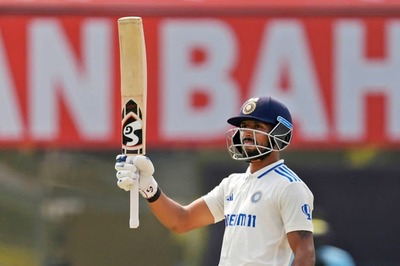
views
Mahatma Gandhi Road has many jewels in its crown but none like that of the building at No.1 MG Road — the St Mark’s Cathedral. A hard-to-miss imperial beauty trying to hide behind a canopy of trees, the church was a far cry from what it is now.Teasingly called as the ‘match box church’, St Mark’s was an ‘ugly duckling’ that changed into a swan albeit with some beautification. In the book St Mark’s Cathedral: Glimpses of Its Life and Witness, Victor Koilpillai talks about how the church came to be built.“There was a small detachment of troops inside the Bangalore Fort and they had built a plain, longish room with a ‘vestry’ to serve as a church which came to be known as the Drummers Chapel or Fort Church (which was later shifted). After all the troops were moved to the barracks in the Cantonment (which came up in the first few years of the 19th century), the need for a chapel which was conveniently located for the troops in the Fort and the barracks became urgent.A spot midway between the Fort and the farthest barrack in the Cantonment — the area around the present Holy Trinity Church was chosen.Thus, in a prominent spot of the Cantonment of that day, St Mark’s Church came up which was officially opened in 1812. The church is named after St Mark, one of the 12 disciples of Jesus Christ, who was believed to have been the first Gospel writer.Built to accommodate about 400 persons — only British troops, the first building was a simple one — a plain, rectangular, lowroofed structure.Rev Frank Penny, Church historian of the period described it as ‘one of the ugliest buildings ever erected, looking for all purposes like a matchbox.’However, it was renovated in 1909 and again in 1923 when a fire broke out during a theft and destroyed the whole interior. It was fully functional only in 1927. This cathedral was modeled along the lines of the 17th-century St Paul’s Cathedral. Parallel to its renovation was the transformation of the kind of visitors it saw.What started as a church for the garrison later saw elite groups of Indians visiting it. Soon after Independence, locals started using it and the church was made a part of Church of South India — a union of Anglican and Protestant churches of South India.The present structure is well-maintained and indeed a visual treat. It’s colonial structure, imposing dome, roman arches transform your curiosity to sobriety.Yes, it has that much effect. A silver bell hangs on the roof above the entrance which is said to be one of the best-maintained external bells and is also amongst the youngest. The interiors are no less; it in fact exceeds the exteriors with its stained glasswork. The most prominent and noteworthy is the one depicting the Holy Communion at one end of the church. At the other end is the oldest pipe organ in the city. To add to its grandness are the pillars and memorial tablets.Come Christmas and the place will be a sight to behold. The church promoted music and community service and continues to do so. It is a landmark that gives you a glimpse into a bygone era at the Cantonment yet has a strong hold in the present. No 1 MG Road is a magnificent edifice that continues to stir curiosity among visitors.




















Comments
0 comment